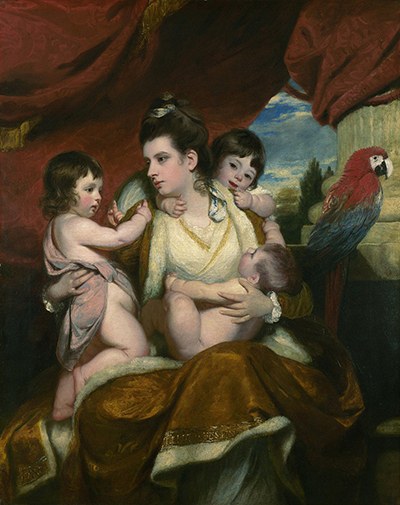Lady Cockburn and Her Three Eldest Sons is a piece of artwork by renowned portrait owner, Joshua Reynolds. The artist started work on the picture in 1773 and it is in the Grand Manner. Grand Manner is a idealised aesthetic that was formulated in the high renaissance.
Joshua Reynolds took inspiration from two different paintings, which was very common for him as an artist. The first painting he took inspiration from Velázquez's Toilet of Venus, where Reynolds modelled the child in Lady Cockburn and Her Three Eldest Sons on Cupid. The second painting he took inspiration from was Anthony van Dyck's Charity, where he used a similar style for the general composition of the piece. The painting was initially passed down to Mr Cockburn's son, George. After this, it was passed on to his daughter who was the wife of Sir James Hamilton.
In 1906 is was given to the National Gallery and it is still on display there today. There are many other paintings by Joshua Reynolds on display at the National Gallery and all of them are in the same Grand Manner style as Lady Cockburn and Her Three Eldest Sons. This is one of only a few paintings that was actually signed by Joshua Reynolds. If you looks closely you can see the artists signature on her dress and the date of completion, 1775. Lady Cockburn was the wife of Sir James Cockburn. The marriage was arranged by her uncle, as part of a marriage settlement of twenty thousand pounds.
The style of Lady Cockburn and Her Three Eldest Sons was the style that Reynolds preached in his lectures at the Royal Academy, when he was president. The parrot in the painting was a last minute addition. Many critics argue that this was a mistake, and some think it is the best part of the painting. Either way it is an aspect that has caused controversy since the painting was finished in 1775. Each son in the painting went on to have a title, with two becoming Baronet and one becoming Admiral of the Fleet.




